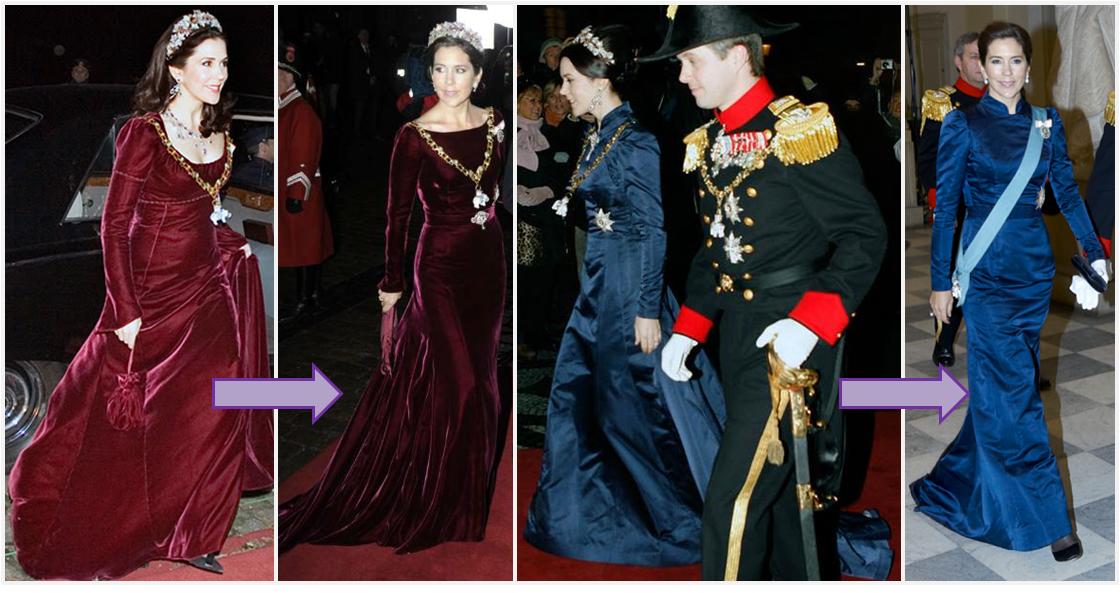
The tiara went out of favor during medieval times, because it was believed that the heads of royal women should always be covered, typically with a cone-shaped hat. Eventually, tiara’s moved away from their male-centric origins and became associated with the more delicate status-denoting headpieces, particularly in the half-moon design. The Persian royalty specifically wore purple and white head adornments, colors which were reserved for the monarchy, and the tiaras themselves were only bestowed upon kings. A tiara referred to the large headpiece worn by Persian kings, which were precursors to the Pope’s peaked crown that emerged in the eighth century. The first usage of the word “tiara” can be attributed to Ancient Persia. For her feminine divine-themed Christian Dior Haute Couture Spring/Summer 2020 collection, designer Maria Grazia Chiuri accented the fashion with delicate, gold diadem headbands.

Recovered paintings and sculptures also depict diadems as fixtures on the heads of ancient gods and goddesses. The everlasting wreath then signified the winner’s eternal legacy. In Rome, laurel wreaths were recreated with gold, and victors were bestowed with a precious replica of the natural element. Winner’s of the earliest Olympic Games would receive crowns of fresh laurel leaves as reward for their victory. These jewelry pieces denoted one’s social status or crowned the heads of victors at ancient competitions. Crafted from various metals, early Greek diadems were adorned with intertwined twists and detailed rosettes, perching on the wearer’s head in a half-circle wrap. Our modern tiara is most similarly linked to the hair jewelry of the Ancient Greeks, with styles rooted in the archaic period. However, before the half-moon crown design was referred to as a tiara, the adornment was known as a diadem, a word derived from the Ancient Greek diadeien, meaning “to bind around.” Traces of the diadem style were recovered in Ancient Egypt, where pharaohs adorned themselves with ornamented gold headbands.

Since its invention in antiquity, the tiara has identified its wearer as someone with power, status, skill, or royal upbringing. From the tiara’s invention to its current status as a royal sartorial piece, CR traces the origins of the ornate headpiece.

Precious and priceless tiaras and crowns have been signifiers of wealth and power since Ancient Greek times, and they’ve prevailed to modern day, where they now stand as relics of a historic and elite lineage. While Queen Elizabeth II and the royal family currently hold claim to one of the most extravagant and storied jewelry collections of all time, the conception of the ornate status symbol dates far before the British monarchy’s existence. The sparkling accessory not only topped Princess Beatrice’s bridal look but served as a symbol of history and unity. She ultimately picked the Queen Mary diamond fringe tiara, the exact same piece that her grandmother, Queen Elizabeth II, wore at her own royal wedding in 1947. The princess had a wealth of priceless tiaras to choose from, as many of the royal family’s Crown Jewels have been heirlooms of the lineage for generations. The royal family announced the marriage the day following the couple’s July 17 wedding, sharing images from the private ceremony and a few details about Princess Beatrice’s dress, a vintage Norman Hartnell gown, and tiara. Earlier this month, Princess Beatrice secretly wed Edoardo Mapelli Mozzi at Windsor Castle.


 0 kommentar(er)
0 kommentar(er)
